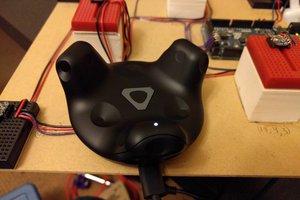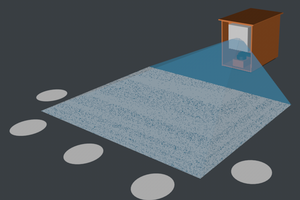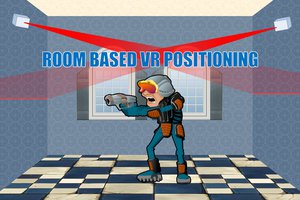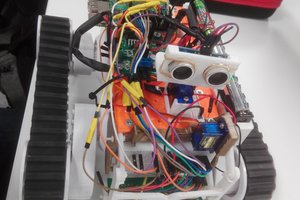To make the experience fit your profile, pick a username and tell us what interests you.
We found and based on your interests.
The moment I've been waiting for has finally arrived. Testing the algorithm!
So it turns out, the code I wrote originally is more or less workable. With a few simple tweaks, I am able to get everything working. With the following exceptions:
Some Challenges
The very first problem I ran into was that I couldn't juice enough torque from my motors. It would either be too slow, or too weak. So I swapped out the 12v steppers with 3v steppers (which have a higher amperage rating), and then proceeded to experiment with over-clocking the voltage in order to increase the torque.
I'm using L293D H-Bridge drivers which, as it turns out, are ancient relics of a less civilized age. They have serious voltage drop, which I think explains why I'm getting such awful torque.
Many voltages later, I still can't get it to overcome gravity. It's so close, but the angle-of-attack at which critical-failure happens is just too dang low. As a reality check, I removed the battery pack from inside bbot, effectively reducing the overall weight significantly. Lo and behold - it actually works (mostly)!
I'm planning to redesign the robot such that the battery pack is housed at the lower level. This might work. Idk. My other idea is to add yet another battery to increase torque. But I need to be careful, as I'm nearing the amperage limit.
The Accelerometer
By the way, I forgot to mention that I cast the HMC5883L asunder. It's truly not great for my application. The sheer sensitivity to magnetic fields, the inconsistent readings, the fact it never really quite worked... *sigh*
I've invested (a whole 3$) into an ADXL335 triple-axis accelerometer. This thing is badass. No calibration required and no sensitivity to magnetic fields = pure happiness. It just worked right out of the box.
So all that calibration work I focused on earlier was for naught. But that's okay - it was actually a lot of fun to explore the limitations of the HMC5883L. Knowledge is power! And I learned that particular unit wasn't for me.
After what feels like a lifetime, I've finally received the fourth revision of my circuit board!!! Woohoo! The fab that I've been using is called JLCPCB and they are fantastic. Really cheap and super fast delivery.
Why am I on rev 4, you may ask? Well... some mistakes of the past include:
- Bore sizes for custom footprints are too small
- Arduino chip facing inwards, so you can't access the USB port
- Rogue 12v wire connected to 5v input on the L293D
- Distinct lack of noise filtering capacitors.
After fixing all those issues, we are left with the glorious piece of engineering you see below. If you look closely, you may notice a number of hacks. That's because, as it turns out, 4th time is NOT the charm. The main mistake I made this time...
- Capacitors are not supposed to be wired like a switch... How did that even happen!?
That being said, I didn't really need those capacitors anyway. So I just added jumpers which are able to complete the circuit. I'm going to be putting this all together and then we'll see what happens!
I have entered this project into the data logging contest because of the work I did to analyze and calibrate the HCM5883L magnetometer. It wasn't the whole point of my project, but I think it's a fun look at how visualizations can help understand what's happening.
The ultimate goal of my project is to create a two-wheeled robot which is capable of defeating gravity in a real-time battle against the forces of nature. One of the first major decisions to make: which accelerometer do I use? Having a few HMC5883L sensors lying around, I decided to create a small circuit to collect telemetry and see whether it would be a good candidate for my robot.
RUBBISH
As a sanity check, I wrote a small program to collect the raw sensor readings and then looked at the numbers as I rotated the device about all of its axis. Much to my surprise, the values were all over the place. Rotating along two axis (what I imagined were X and Y) caused all three numbers to change. That's not a good sign, but looking at raw numbers can be a hard thing for humans to make sense of. It's time to open a Jupyter Notebook and plot the data.
IDENTIFYING WHICH AXIS REPRESENT DIRECTIONAL HEADING
The first actual experiment began by mounting my sensor to a large base and then spinning that base like a turn-table. The idea is that if I can isolate the X/Y coordinates and produce a heading, the remaining plane will indicate rotation. With this information, I can apply virtual offsets to the readings to "normalize" the plane.
Collecting this data, I was able to plot it in matplotlib. I used a scatterplot to map two axis at a time. Presumably if I find the dimensions which represent "directional heading" that should appear as a perfect circle.
And in fact, I was able to find just that. Here are the visualizations:
X and Z axis are represented by this lovely oval. This would indicate that X and Z are representative of magnetic heading.
Y and Z are represented by these weird lines. I'm going to assume Y is rotation, and Z is one component of heading. So that means there's variance in the rotation based on which direction the sensor is facing. NOT GOOD!
And lastly, when plotting X and Y we can clearly see there is no correlation whatsoever.
So we now know that X and Z represent directional heading. As we can see by the second graph, the rotation seems to change based on which direction the sensor is facing. An easy win now is to calibrate the rotational axis so it remains flat no matter what the heading is.
CALIBRATING THE SENSOR
Here's some python I came up with to demonstrate how to normalize the rotation value. In pseudo-code, this function loops over each point in the dataset and computes the heading. It then stores a dictionary of values where the key is the heading and the value is the inverse of the actual sensor reading.
If you multiply that value, you will effectively zero out the reading.
def generate_calibration(cal_list_x, cal_list_y, cal_list_z):
y_factor = {}
y_factor_count = {}
for idx in range(0, len(cal_list_y)):
px = cal_list_x[idx]
py = cal_list_y[idx]
pz = cal_list_z[idx]
h = round(heading(px,py,pz))
if round(py) == 0:
factor = 1.0
else:
factor = (1 / py)
if h in y_factor:
y_factor[h] += factor
y_factor_count[h] += 1.0
else:
y_factor[h] = factor
y_factor_count[h] = 1.0
for k in y_factor.keys():
y_factor[k] /= y_factor_count[k]
return y_factor
To use the output of this function, you simply ask the robot "what direction am I facing" and then you will get a multiplier that you can apply to the current rotation reading. Any variance detected thereafter should be legitimate.
TESTING OUT THE CALIBRATION
To test out the calibration, it is imperative to isolate the variables as much as possible. I 3D printed a jig which has a 10-degree backwards tilt and then mounted my...
Read more »I've been giving a lot of thought about how to calibrate the magnetic compass (HMC5883L). There are a few interesting qualities that I've discovered. First - the raw readings, even after self-test, are nonsensical. Technically I'm able to get linearly-scaled values. But they are in unexpected ranges. More importantly however, is that the motors themselves cause significant interference with the operational quality of the HMC5883L readings.
All that to say, I'm thinking of ways I can calibrate this thing. My current plan is very naiive, but I'm going to do some tests and see if it's feasible. At its most basic level, I'd like to discover an offset - and maybe a scale factor - in order to constrain the readings between 0 and 1. For this project, I really only care about the Z axis, as that will represent tilt. Although it would be nice to calibrate all axis so I have more opportunity for advanced functionality in the future.
Calibrating the baseline
So to calibrate, I'm thinking I'll mount the sensor roughly near its final resting place (so it can experience interference from the motors) and then I simply need to make sure bbot stays perfectly level, while I rotate the whole machine 360 degrees collecting data from the sensors all the while. Taking the maximum z value as an offset seems like a reasonable way to collect the baseline. Since it'll have been perfectly level, I know that any reading I get will just be potential noise.
Is that going to be enough? I'm not actually certain. My suspicion is that I'll find it works for some directions, and fails for others. If the values are non-linear, then my approach will need to become infinitely more interesting. I have thoughts on this, but I'll wait until I can prove whether or not they're relevent.
Calibrating the range
Once the baseline is collected, that means the sensor should read some static value when it's perfectly level. Next, I need to make sure that tilting the machine produces similarly consistent values based on the degree of rotation. Ultimately I intend to calculate how many steps per degree are required to actuate the motor in order to return to a level state. In this way I won't be over-correcting.
To calibrate the rotational range, I'm thinking I'll take bbot and rotate forward 90 degrees, then backwards 90 degrees. Repeat this a few times and collecting data all the while. Given these readings I can take the minimum and maximum and derive some kind of range which can then be used to constrain the readings between.
Tilt = ((reading - min) / min)
Or something like that. I haven't had enough coffee yet for math.
Final thoughts
So that's the plan. Calibrating the baseline, and then calibrating the tilt. It'll require a lot of tests to prove this will work, but I'm hopeful that I can find some way to calibrate the readings accordingly. I'll write more updates as I work through the process.
Circuit board design is complete!
The first version of the circuit board is complete!!!! This is my first time using KiCAD and I suspect there will be a lot of random issues, especially with things like hole size. So I'm going to get this fabricated and then we'll see what happens.
Manually routing wires is really hard!! But at the same time, it's a little zen. Easy to get lost in the routine.
The good news however is that I can use the general dimensions to finish my 3d printing design. Knowing there will be a 3M mounting hole, and the approximate dimensions, helps a lot.
In the meantime, the wheels arrive tomorrow! It'll be fun to come up with a strategy to mount them to my stepper motors.
Day 2
Now that I've got a good handle on the electronics, I switched to SolidWorks for a bit of CAD prototyping. Bbot's chassis is nearly complete. The current design features a NEMA-17 mount, top deck, battery mount, and holes for a wire harness. The only thing I've got to figure out now is where to put the electronics. And for that matter, what form factor the electronics will be in.
So next I'm going to work on planning out the circuitry which should help inform the last component of the structure.
Day 1
It's been about a day since I started working on this project, and I've made what I consider tremendous progress. I've written more than half of the code and wired up most of the components - this includes shift-register manipulation, a clean stepper motor interface, and some well documented helper methods. I still need to get the accelerometer hooked up and coded, but that should be relatively easy considering it's i2c. Then it'll be all about the algorithm. I'm happy to have the boilerplate out of the way.
Next up I'm going to spend some cycles working on the chassis. All code has been checked in to my project github repo, and the CAD files will similarly end up there.
Looking forward to having something pretty to show before too long!
Create an account to leave a comment. Already have an account? Log In.
Become a member to follow this project and never miss any updates

 Mike Turvey
Mike Turvey
 Timescale
Timescale
 Lee Cook
Lee Cook
 Alan Chambers
Alan Chambers